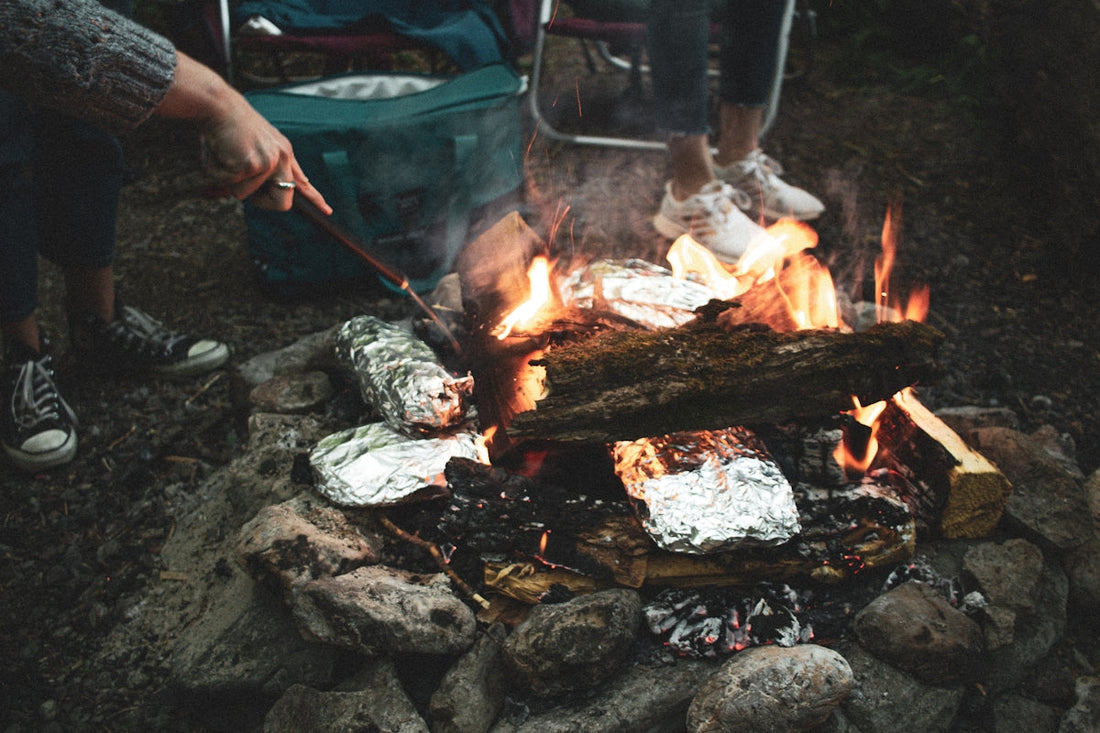
Everything You Need to Know About Cast Iron Skillets for Camping
Share
Camping has long been cherished as an opportunity to escape the hustle and bustle of everyday life and reconnect with nature. Among the myriad ways to enhance your camping experience, campfire cooking stands out as an indispensable element. For passionate outdoor chefs, a cast iron skillet ranks high on the list of camping kitchen essentials.
Unraveling the secrets of this timeless cooking gear can greatly enhance outdoor dining at the campsite. This post will delve into all you need to know about cast iron skillets for camping, alongside some expert campfire cooking tips to make your meals memorable.
Why Choose a Cast Iron Skillet for Camping?
Cast iron skillets have been a staple in kitchens for centuries, and their utility extends far beyond the confines of the home kitchen into the great outdoors. Here’s why it is a top choice for campfire cooking gear:
- Durability: Cast iron skillets are known for their rugged durability. They can withstand high temperatures, making them perfect for open-flame cooking.
- Heat Retention: Cast iron retains heat exceptionally well, which allows for even cooking and browning, essential whether you're frying up bacon or searing steaks under the starlit sky.
- Versatility: From pancakes in the morning to sautéed vegetables for dinner, cast iron skillets accommodate a wide range of cooking methods such as frying, baking, searing, and even roasting.
- Natural Non-Stick Surface: With proper seasoning, a cast iron skillet develops a non-stick surface over time, which is especially beneficial for cooking sticky or delicate foods.
How to Season Your Cast Iron Skillet
Before diving into campfire cooking, it is paramount to properly season your cast iron skillet. Seasoning creates a protective layer on the skillet, preventing rust and enhancing its non-stick surface.
- Clean the Skillet: Start by washing the skillet with warm soapy water and a soft sponge. Dry it thoroughly.
- Apply Oil: Rub a thin layer of vegetable oil or melted shortening over the entire surface of the skillet.
- Bake: Place the skillet upside down in an oven preheated to 375°F (190°C) with a foil-lined baking sheet underneath to catch any drips. Bake for about an hour. Let it cool completely inside the oven.
This process should be repeated a few times initially, and after every few uses, to maintain the non-stick surface.
Campfire Cooking Tips
Cooking over a campfire can be daunting, but with the right tips, you can achieve delicious results:
- Control the Fire: A good cooking fire is small and manageable. Use coals more than flames for uniform heat.
- Preheat the Skillet: Place your skillet over the coals, allowing it to absorb ample heat before adding any ingredients. This prevents food from sticking and ensures even cooking.
- Use the Right Tools: Long-handled utensils are important to keep your distance from the heat. Consider investing in a campfire tripod or grill grate for more cooking flexibility.
- Be Prepared for Wind: Wind can increase fires unpredictably, so always have water nearby to manage the flames in wind-prone areas.
Essential Campfire Cooking Gear
Apart from the cast iron skillet, here are a few items to enhance your camping cooking experience:
- US Organic Mosquito Repellent Anti Bug Outdoor Pump Sprays: Enjoy a bug-free cooking environment with this DEET-free repellent here.
- Kids Herbal Armor DEET-Free Pump Spray: Keep the whole family safe from bugs with this natural repellent here.
- PARA'KITO Mosquito Insect & Bug Repellent Clip: A convenient, clip-on solution to ward off bugs while focusing on your culinary creations here.
Maintaining Your Cast Iron Skillet
Proper maintenance ensures your cast iron skillet lasts a lifetime:
- Avoid Soapy Water: After cooking, clean the skillet with hot water and a stiff brush. Avoid detergents that can strip the seasoning.
- Dry Thoroughly: After washing, dry the skillet completely with a towel to prevent rust.
- Re-season Regularly: Apply a thin coat of oil after each use, especially if the skillet appears dry.
Conclusion
A cast iron skillet is more than just a piece of campfire cooking gear; it’s a multipurpose tool that promises delicious meals and cherished memories in nature. As part of your camping kitchen essentials, this versatile piece can transform your outdoor dining at the campsite into a memorable experience.
Explore more camping essentials and gear tailored for your next adventure by visiting Packstead.
Embrace the art of open-flame cooking with confidence, knowing that with the right tools and techniques, your campfire meals can be as satisfying as those prepared in any professional kitchen.
